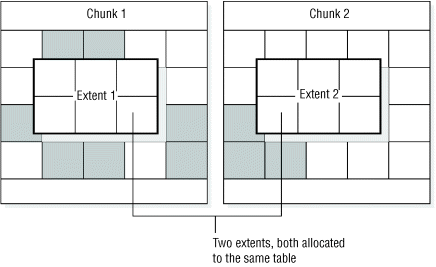Tables
In relational database systems, a table is a row of column headings together with zero or more rows of data values. The row of column headings identifies one or more columns and a data type for each column.
When you create a table, the database server allocates disk space for the table in a block of pages that is called an extent. You can specify the size of both the first and any subsequent extents.
You can place the table in a specific dbspace by naming the dbspace when the table is created (with the IN dbspace clause of the CREATE TABLE statement). When you do not specify the dbspace, the database server places the table in the dbspace where the database is located. You can fragment a table over more than one dbspace or within a dbspace by specifying a fragmentation distribution scheme. However, if you set the AUTOLOCATE configuration parameter to a positive integer, the database server automatically fragments new tables by round robin, in the dbspaces that are optimal for the table.
A table or table fragment is located completely in the dbspace in which it was created. The database server administrator can use this fact to limit the growth of a table by placing a table in a dbspace and then refusing to add a chunk to the dbspace when it becomes full.

Simple large objects are in blobpages in either the dbspace with the data pages of the table or in a separate blobspace.
Simple large objects are located in blobpages in either the dbspace with the data pages of the table or in a separate blobspace. When you use the Optical Subsystem, you can also store simple large objects in an optical storage subsystem.